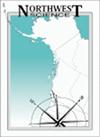爱达荷州一个大型波动峡谷水库中与克拉皮丰度指数相关的因素
IF 0.5
4区 环境科学与生态学
Q4 ECOLOGY
引用次数: 0
摘要
摘要由于年份等级强度的高度变化,克拉皮(Pomoxis spp.)种群的管理具有挑战性;然而,这种可变性在北美西部很少被研究,那里的克拉皮经常占据大型陡峭的储层,容易出现严重的水位下降。我们通过对幼鱼的长期拖网捕鱼和对老年鱼的长期电捕鱼,研究了各种因素对克拉皮丰度的影响。我们的主要发现是:1)秋季0龄紫蝶的丰度在夏季幼虫丰度和库流量较高的年份较高;2) 春季1日龄的克拉皮丰度在鱼类进入第一个冬季时更大、更丰富、水力停留时间减少、冬季水库容量更大的年份更高,以及当捕食性大小的小嘴鲈鱼(Micropterus dolomieu)在春季更为丰富时(尽管后一种关系可能不是诱因,而是对水库中相互有利的环境条件的平行反应);3)进入第一个冬天的0岁紫薇在夏季幼虫数量较低、夏季水温较高的年份体型较大。我们建议在大型峡谷水库中进行秋季电捕鱼,以监测克拉皮鱼的数量,因为那里的海岸线往往太陡,无法用陷阱网对鱼类进行采样,因为它提供了0岁克拉皮鱼第一个冬天开始时的丰度和大小指数,以及老克拉皮年类和同域物种的数据;与夏季拖网相比,它还需要更少的采样工作。本文章由计算机程序翻译,如有差异,请以英文原文为准。
Factors Related to Crappie Indices of Abundance in a Large, Fluctuating Canyon Reservoir in Idaho
Abstract Crappie (Pomoxis spp.) populations are challenging to manage due to highly variable year-class strength; however, such variability has rarely been investigated in western North America, where crappie often occupy large, steep-sided reservoirs prone to severe drawdown. We investigated the influence that various factors had on crappie abundance, as indexed by long-term trawling for larval fish and long-term electrofishing for older fish. Our primary findings were that: 1) autumn age-0 crappie abundance was higher in years when larval abundance and reservoir flow were higher in the summer; 2) spring age-1 crappie abundance was higher in years when fish were larger and more abundant entering their first winter, when hydraulic residence time was reduced and the reservoir volume was higher during the winter, and when predatory-sized smallmouth bass (Micropterus dolomieu) were more abundant in the spring (though the latter relationship was likely not causative but rather a parallel response to mutually advantageous environmental conditions in the reservoir); and 3) age-0 crappie entering their first winter were larger in years with lower summer larval crappie abundance and warmer summer water temperature. We recommend autumn electrofishing to monitor crappie populations in large canyon reservoirs, where shorelines are often too steep to sample fish with trap nets, because it provides an index of age-0 crappie abundance and size at the onset of their first winter as well as data on older crappie year classes and sympatric species; it also requires less sampling effort than summer trawling.
求助全文
通过发布文献求助,成功后即可免费获取论文全文。
去求助
来源期刊

Northwest Science
环境科学-生态学
CiteScore
1.30
自引率
0.00%
发文量
23
审稿时长
>36 weeks
期刊介绍:
The pages of Northwest Science are open to original and fundamental research in the basic, applied, and social sciences. All submissions are refereed by at least two qualified peer reviewers. Papers are welcome from authors outside of the Pacific Northwest if the topic is suitable to our regional audience.
 求助内容:
求助内容: 应助结果提醒方式:
应助结果提醒方式:


